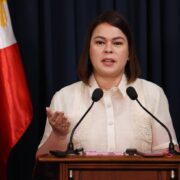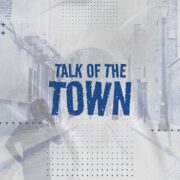Hunger as ‘public perception’?

Pearl S. Buck perfectly captured the nature of hunger as a primeval motivation for humans when she wrote: “A hungry man can’t see right or wrong. He just sees food.”
As such, the late American writer would have disagreed with Social Welfare Assistant Secretary Irene Dumlao when the latter described the latest Social Weather Stations (SWS) survey on hunger as mere “public perception.” Neither would millions of underprivileged Filipinos agree that hunger is a matter of opinion or imagination instead of a crisis that consumes every second of their lives.
At a Malacañang press briefing last week, the Department of Social Welfare and Development (DSWD) official was asked to comment on the SWS poll showing a dramatic increase in hunger from February to March among families who rated themselves as poor.
“Yes, but that is public perception, based on varying contexts,” Dumlao said, adding that the government’s own data should be weighed more heavily than those gathered by independent pollsters.
Callous tone
What do the numbers say?
The March 2025 Stratbase-SWS poll found that 27.2 percent of Filipino families experienced involuntary hunger—or being hungry and not having anything to eat—at least once in the past three months. Hunger occurs at different rates among the poor and the non-poor, although hunger is usually higher among the poor.
But the most startling finding is how total hunger rose sharply among the self-rated poor, from 26.4 percent in February to 35.6 percent in March. Among the non-poor, the hunger rate also spiked slightly, from 16.2 percent to 18.3 percent.
Dumlao, however, expressed doubt that the poll truly reflected the state of hunger in the country, comparing it unfavorably with the annual Family Income and Expenditure Survey of the Philippine Statistics Authority.
“Their survey results are dependent on questions they ask respondents. While we recognize and acknowledge these studies, we also have to compare them with the scientific studies done by the government,” she said.
Dumlao may have meant to reassure the public, but her remarks struck a callous tone in the face of worsening hardships faced by Filipinos who live below the poverty line.
Conducted quarterly for decades and widely used to gauge household conditions, the SWS survey has found that hunger affected more than one in four families going without food, at least once, because of poverty. Do these respondents misperceive their empty stomachs?
Barometers of social reality
It’s evident that the DSWD knows and recognizes the problem of hunger but by downplaying credible data on the problem, it sends an unfortunate message to the public. Surveys like those conducted by the SWS are certainly not infallible, but neither are they anecdotal or based on hearsay.
Hunger statistics are not abstractions but the product of long-standing methodologies, such as face-to-face interviews, representative sampling, and careful analysis, and have proven to be reliable barometers of social reality.
Dismissing these polls risks not only alienating the public but weakening the government’s policy on poverty. Behind each percentage point is a mother who skips meals so her children can eat, a child who faints in school from lack of nourishment, a family who lives day to day on borrowed money and dwindling rations. These lived experiences cannot and should not be brushed aside as a perception issue.
Perhaps, officials would pay closer attention if the assessment came from an international body. In the 2024 Global Hunger Index, the Philippines ranked 67th out of the 127 countries with a score of 14.4, a “moderate” hunger level.
A distress call
That score, according to the peer-reviewed annual report jointly published by three European nonprofits, was based on four indicators: 5.9 percent of the population is undernourished; 26.7 percent of children under five are stunted; 5.4 percent of children under five are wasted; and 2.7 percent of children die before their fifth birthday.
Like the SWS figures, it would be a disservice to the people to dismiss these numbers as just a matter of public perception.
It is worth noting that Dumlao did clarify her remarks, as she touted the government’s social protection programs, such as the Pantawid Pamilyang Pilipino Program, the Assistance to Individuals in Crisis Situation, and the controversial Ayuda para sa Kapos ang Kita Program.
But there is no faster way to derail progress than to pretend there is no crisis when the crisis is staring at us in the face.
Public perception, in fact, can be just as useful as hard numbers, for it reflects the reality on the ground, and especially, the lived truth of people who remain invisible to the government until they turn up as statistics. When millions say they are poor, and millions more say they are hungry, it’s the wise government that will realize it’s not an ordinary complaint but a distress call: “Give us food.”

















